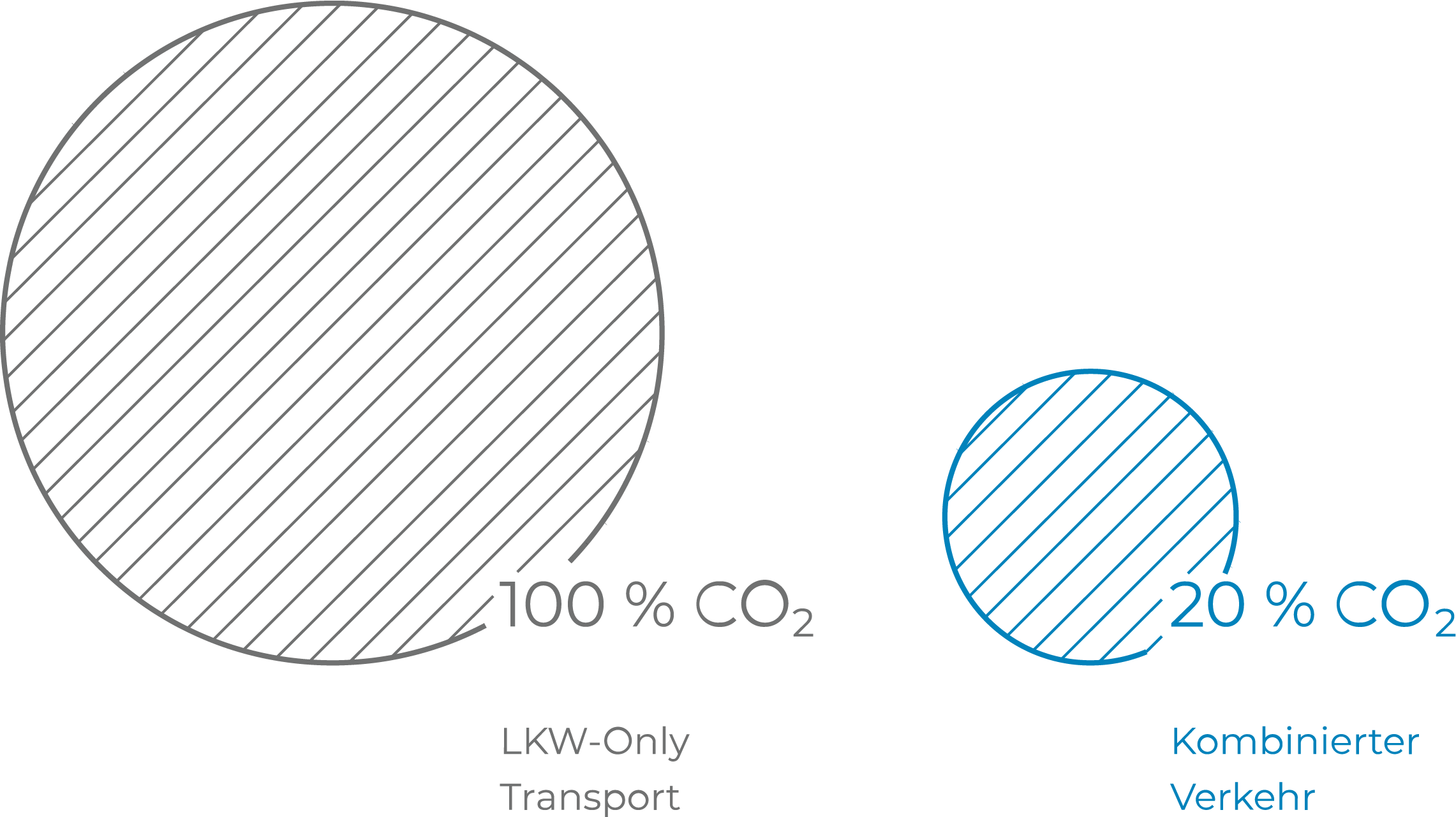Saving at least 80 % of greenhouse gases.

Our globalised economy requires less cost-intensive freight transport while our climate requires low-emission freight transport.
The solution to this is called combined transport – or more academic: intermodal freight transport.
It’s a simple equation: According to 2019 data from the federal Environment Agency in Austria, a semitrailer in long-distance traffic on average amounts for 69g/tkm (grams per ton-kilometre) of Co2-equivalent. For rail transport this figure is at 3,5 g/tkm, thus almost only 5% of road freight transport. Taking into account the last mile, which has to be bridged via lorry, combined traffic reduces emissions by 80% to 85% with each transport. The result for other greenhouse gases such as nitrogen oxide, or particle emissions such as particulate matter is much the same.
In combined transport, each ton considerably contributes to the realisation of the Austrian, as well as the European climate objectives due to the significantly reduced greenhouse gas emissions. Trade-offs in favour of performance or service are, however, not needed for this contribution to climate action. The performance level of combined transport is at similar level with road transport, more often it is even better. An example is the hinterland transportation from and to Austria to the seaports, where the market share of combined transport is already at 90%.
Combined transport ensures that road congestion is reduced. This statement is easily confirmed by facts and figures: In 2018 around 280 million tons of goods were transported in combined transport.
Here’s food for thought: 12 million lorries could be loaded with 280 million tons of goods. If all lorries were to line up, they would have a total length that is more than five times the circumference of the earth.
To imagine such an enormous amount, here’s another allegory: If 280 million tons of goods were to be transported not via combined transport via rail, but solely via road, the entire European motorway network with its 74.000 kilometres would be fully congested with lorries four times a year.
Transport of goods via rail is lived electromobility. This is due to the predominant part of freight trains in Austria – almost 95% – being operated by electrical locomotives. In Austria, the energy for this mostly derives from renewable sources.
In the course of ongoing infrastructure development, not yet electrified lines will change to (green) electrical operation in the coming years.
Chocolate containing sugar from East-Austrian refineries is produced in Western-Austria. A multitude of Combinet-members, from forwarder to terminal operators and railway undertakings, ensure environmentally friendly transport.
To ensure protection against weather conditions or contamination, sugar is directly transferred from the refinery into dust-tight tank container in Lower-Austria. A lorry transports the containers to the nearby handling terminal in Vienna. At the terminal, the container is transferred to a train which travels the distance of 650 to Vorarlberg overnight. On the next day, the container is transported to the customers via lorry and unloaded into another tank. Back at the Vorarlberg terminal, the container is en route to Vienna once more, to be reloaded.
If sugar would only be transported via road, this would produce one ton more of CO2 emissions than combined transport, which also uses rail for its main run. In other words: Combined transport lowers CO2-emissions to a tenth. In our example, that’s a reduction of one ton of CO2 each way.
Intermodal freight traffic bringing you the best from all around the world.
Learn more